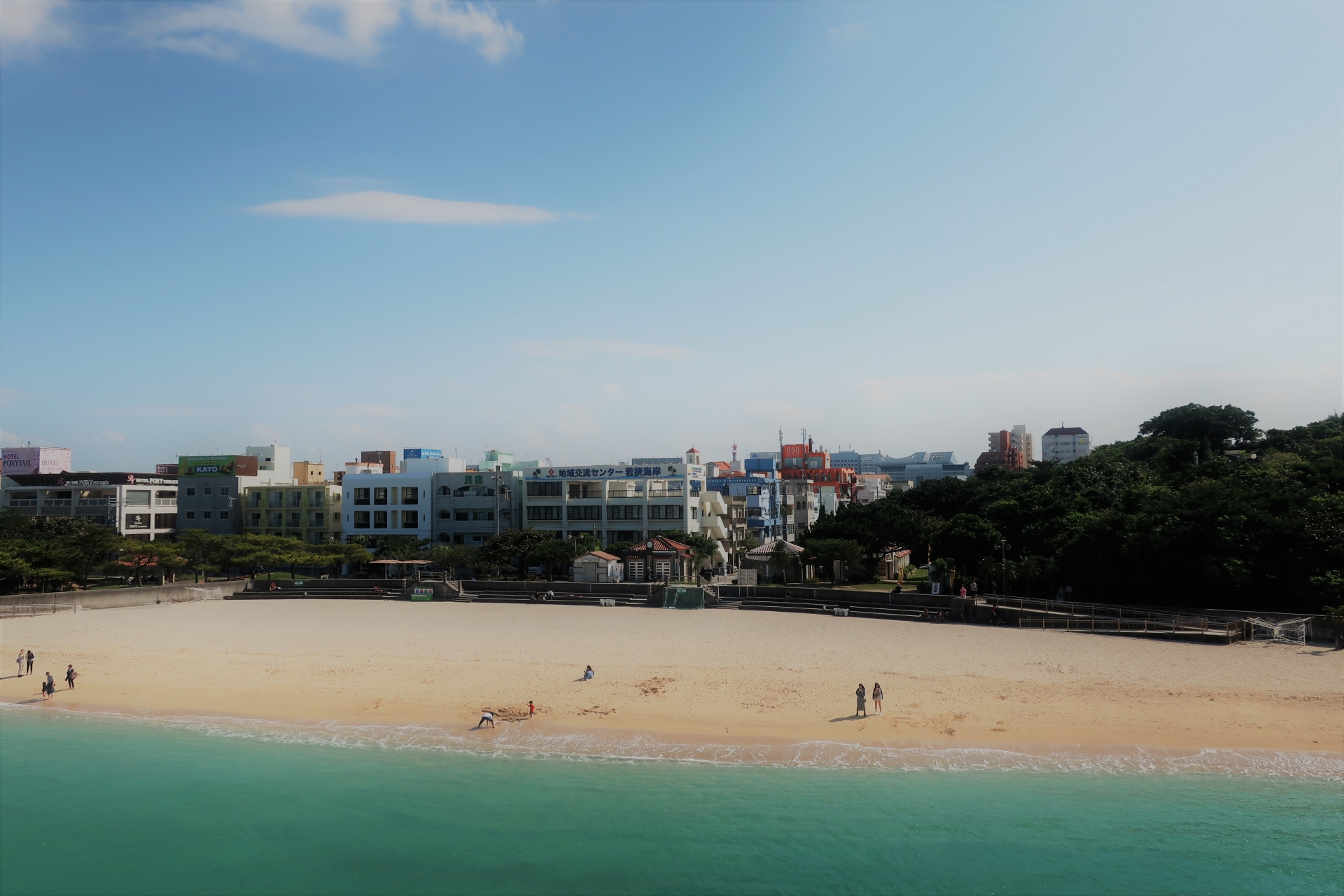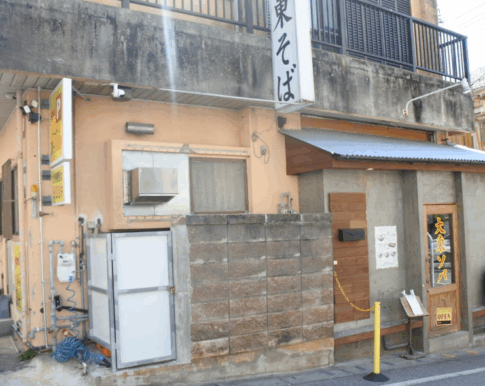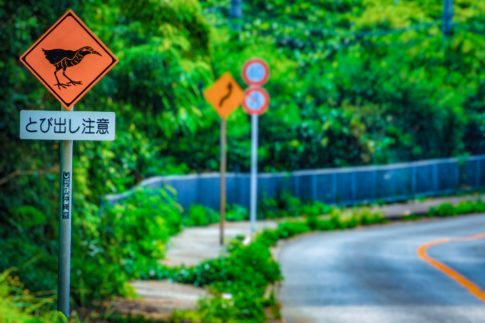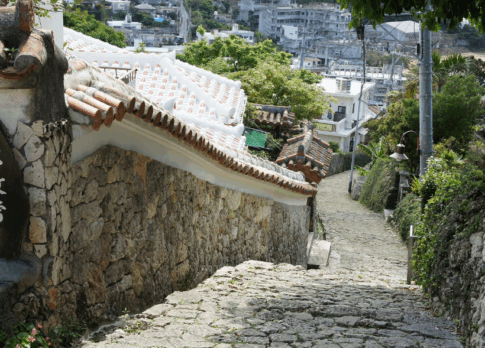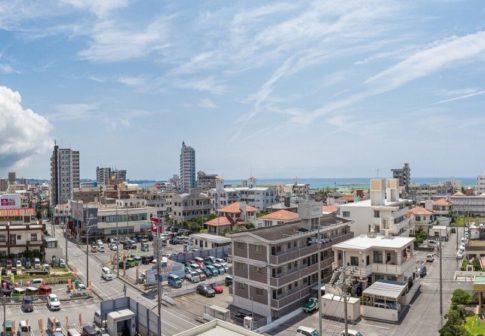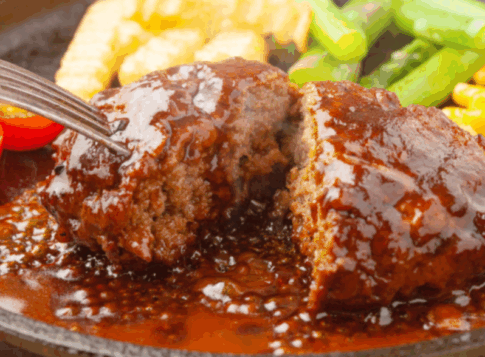Only a five-minute drive from Naha Airport, there is a private memorial museum called the “Museum of Fortitude”. The museum was established by the daughter of a politician named Kamejiro Senaga and exhibits the belongings and achievements of Kamejiro Senaga, a politician who resolutely fought against unreasonable controls in Okinawa under U.S. rule.
Point 1: What is the outline of the private memorial museum, “The Fortitude Museum,” Fukutsukan, Naha City?
The “Fukutsukan” is a private memorial museum located in Wakasa, Naha City, just near the Naha Cruise Terminal.
It is tucked away in a corner of a residential area, not along a main street, so it may be a little difficult to find.
However, many people go out of their way to visit the museum from far away.
The museum was established in March 2013 by Chihiro Uchimura, the second daughter of former politician Kamejiro Senaga, and exhibits more than 10,000 items including Kamejiro’s belongings, newspaper clippings, and videos.
After the Corona disaster, the museum was revived through crowdfunding! That is how many people supported him.
What kind of person was Kamejiro SENAGA, even though he was a private individual, who deserves to be commemorated in a museum? The following is an introduction.
Hours: 10:00 a.m. – 5:00 p.m. (admission until 4:30 p.m.)
Closed: Tuesdays, Year-end, and New Year holidays (December 28-January 3)
Admission: 500 yen
Point 2: Outline of Mr. Kamejiro SENAGA’s life in the “Fukutsukan”.
Kamejiro SENAGA, the protagonist of “Fukutsukan,” was born in 1907 in what is now the city of Tomigushiro, Okinawa Prefecture.
After attending a local junior high school, he went on to Tokyo’s Junten Junior High School and then to what is now Kagoshima University, but was expelled from school for his involvement in the socialist movement.
After two years of military service, he was imprisoned in Yokohama Prison in 1932 for violating the Public Security Law by leading a labor dispute at the Tanna Tunnel and served three years.
He then became a maki-e craftsman but was called up to fight in the war and went to China.
After returning to Japan, he worked as an assistant mayor of Nago Town, a reporter for the Okinawa Asahi Shimbun and the Okinawa branch of the Mainichi Shimbun before becoming president of the Uruma Shimpo (now the Ryukyu Shimpo) in 1946.
During his tenure, he was pressured by the military to resign as president for his participation in the formation of the “Okinawa People’s Party.
Even so, Kamejiro was undeterred.
While running a general store, he became the general secretary of the Okinawa People’s Party and ran for the governorship of the Okinawa archipelago in 1950, but was unsuccessful due to lack of preparation.
In 1952, he ran for the first legislative election and won the top position. After the election, however, he refused to take the oath of office at the Ryukyu government’s founding ceremony, which led to his being stared down by the U.S. military.
Point 3: “Fukutsukan” Kamejiro SENAGA, History of Fortitude
Kamejiro Senaga’s life has demonstrated enough fortitude to this point, but his fortitude continues to grow.
In 1954, Mr. Kamejiro Senaga was arrested again for violating the Immigration Control Act by harboring a People’s Party member who had been ordered to leave Okinawa.
Moreover, based on the testimony of only one person, he was tried without a lawyer and sentenced to two years in prison.
In April 1956, after his release from prison, he ran for mayor of Naha in December of the same year. Although he was blocked by opposing candidates, he won the election.
However, he was punished by the Bank of the Ryukyus, which had been funded by the occupying forces, by having its loans and subsidies to Naha City terminated.
The city government was also forced to freeze deposits, and the mayor was unable to manage the city. However, the citizens voluntarily helped the mayor by paying up to 86% of their taxes, and the crisis was resolved.
This is a big difference from the current politicians who are being complained about by the public for raising taxes unreasonably. This is what a politician should be.
The U.S. military cannot remain silent. The occupying forces and the Okinawa Liberal Democratic Party have submitted no-confidence motions seven times. However, they were unsuccessful.
In 1957, the occupying forces revised the ordinance and stripped Kamejiro of his right to vote because he had been imprisoned in 1954. 1967 finally restored his right to vote, and in 1970 he was elected to the House of Councilors in Okinawa’s first national election.
In 1990, he retired from politics, and on October 5, 2001, he died of pneumonia at the age of 94.
For his achievements, he received the Julio Curie Award, the Naha City Government Meritorious Service Award, the Prefectural Government Meritorious Service Award, and the Okinawa Times Award (Autonomy Award). Not only that, he is an honorary citizen of Naha and an honorary villager of Tomigusuku.
I would like as many people as possible to know that there was such an honorable politician in Okinawa. And now that we are in the “new prewar” era of 2025, this would be a good opportunity to reconsider the relationship between civic life and politics, which at first glance may seem unrelated.
Two films have been produced with Kamejiro SENAGA as a motif. The music for both films was composed by the late Ryuichi Sakamoto, who was troubled by the current political problems.

